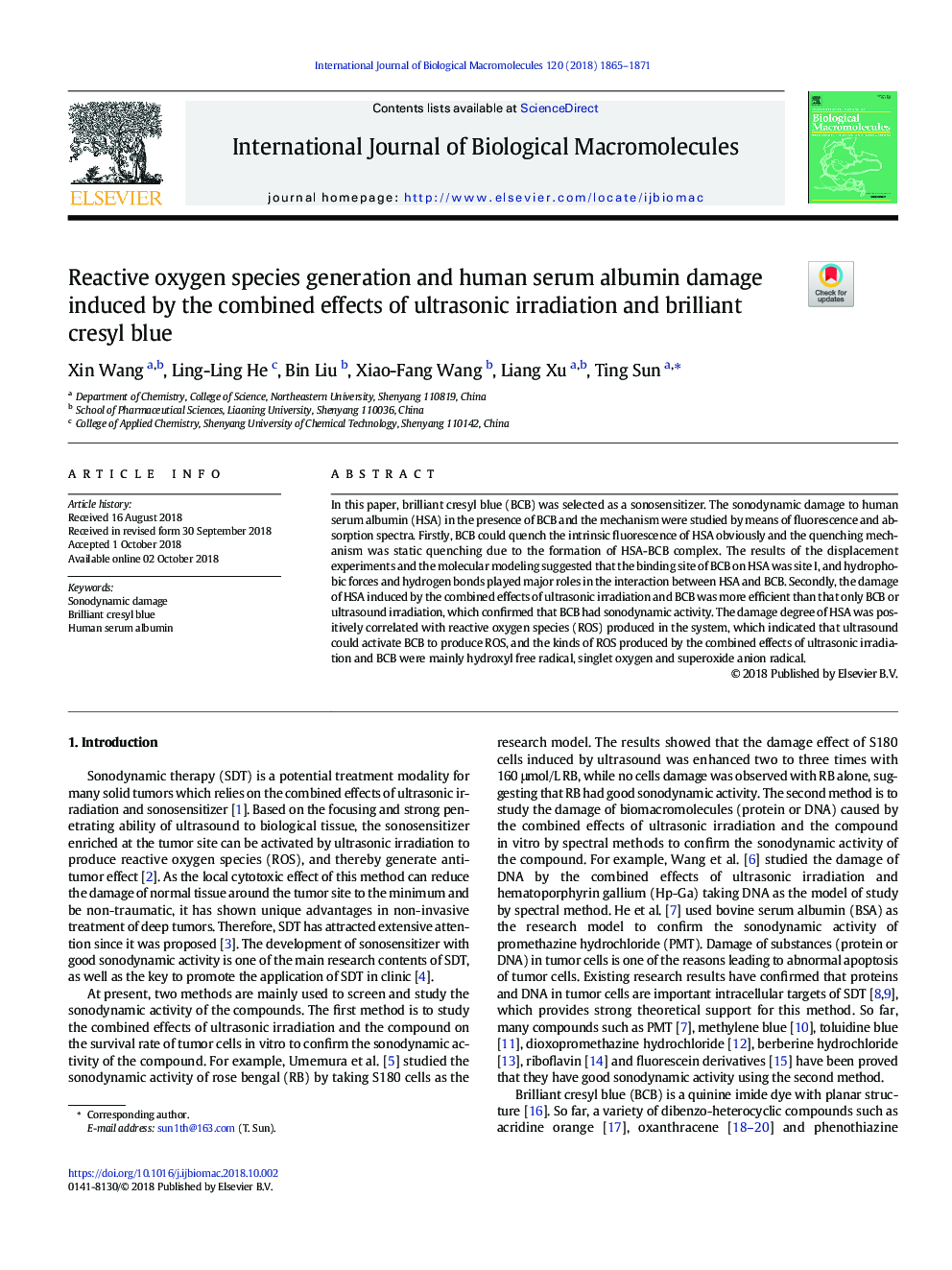| Article ID | Journal | Published Year | Pages | File Type |
|---|---|---|---|---|
| 11026107 | International Journal of Biological Macromolecules | 2018 | 7 Pages |
Abstract
In this paper, brilliant cresyl blue (BCB) was selected as a sonosensitizer. The sonodynamic damage to human serum albumin (HSA) in the presence of BCB and the mechanism were studied by means of fluorescence and absorption spectra. Firstly, BCB could quench the intrinsic fluorescence of HSA obviously and the quenching mechanism was static quenching due to the formation of HSA-BCB complex. The results of the displacement experiments and the molecular modeling suggested that the binding site of BCB on HSA was site I, and hydrophobic forces and hydrogen bonds played major roles in the interaction between HSA and BCB. Secondly, the damage of HSA induced by the combined effects of ultrasonic irradiation and BCB was more efficient than that only BCB or ultrasound irradiation, which confirmed that BCB had sonodynamic activity. The damage degree of HSA was positively correlated with reactive oxygen species (ROS) produced in the system, which indicated that ultrasound could activate BCB to produce ROS, and the kinds of ROS produced by the combined effects of ultrasonic irradiation and BCB were mainly hydroxyl free radical, singlet oxygen and superoxide anion radical.
Related Topics
Life Sciences
Biochemistry, Genetics and Molecular Biology
Biochemistry
Authors
Xin Wang, Ling-Ling He, Bin Liu, Xiao-Fang Wang, Liang Xu, Ting Sun,
